In the realm of industries done in by capricious market forces, Lycoming and Continental arent just survivors, theyre evolutionary standouts. The entire GA industry imploded between 1980 and 1985 when sales rode over a cliff and both Lycoming and Continental had to rapidly reinvent themselves to survive in a world where 85 percent of their new engine business simply evaporated into thin air. Not
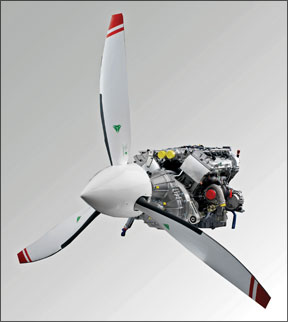
many companies have weathered such a drubbing. (A captive replacement market helped.)
The sun shaft in the gloom is that in 2006, about 2750 piston aircraft were built in the U.S., a healthy 12 percent increase over 2005, but still a pale shadow of the 17,811 piston airplanes shipped in 1978. By our calculations, Lycoming has a razor- thin market advantage in the certified fixed wing segment, but if you add Experimentals and piston helicopters, Lycoming holds a dominant share of the total piston engine market. (Continental has no presence in the helicopter market and minimal Experimental penetration.)
This sounds like good news for Lycoming, but there’s a problem. How do you eke out meaningful growth in a fragmented market with intense competition where the usual way of obtaining new business is to steal it from someone else and where it costs millions to develop new products that will, at best, sell in the hundreds of units, not in the thousands? Further, in the fixed-wing market, Cirrus, Cessna, Columbia, Beechcraft and Mooney have all proven that what profits there are to made are likely to be on expensive, high-performance aircraft with large-displacement engines. And its here that Continental leads and Lycoming lags, by a margin of nearly two to one.
Continentals success is built almost entirely on the strength of one engine series, the IO-550, lately with top down, tuned induction. The engine usually runs glass smooth and has the best fuel specifics of any aircraft gasoline piston engine widely
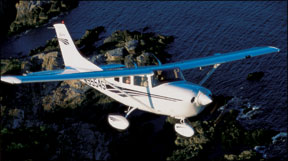
in use. Lycomings competitive powerplant is the angle-valve IO-540 and TIO-540 series used in the Cessna 206, where it has earned mixed reviews. Many owners of 206s got burned on Lycomings crankshaft recall and others have complained about service issues and poor fuel specifics. Lycoming also has the 350-HP TIO-J2BD among its available powerplants.
Cessna and Lycoming are, of course, units of the same corporate mothership, Textron. In the past, that alone might have assured Lycoming a lock on Cessnas substantial business. Not anymore. Sources in the industry tell us that Cessna is unhappy with Lycoming because of the crankshaft debacle and Cessnas CEO Jack Pelton has gone on record to say that the Textron board has given him permission to go elsewhere for engines.
Were told that the emerging Cessna Next Generation aircraft-the so-called “Cirrus killer”-has flown with both Lycoming and Continental engines. Although Cessnas on-the-record comments are non-committal, selective leaking gives the impression that Continental has the inside track on a project that could easily mean 300 or more engines a year, a big number in the current market. Is this merely a shot across Lycomings bow meant to get it busy on improved engines or is Cessna serious? We don’t know. But we do know that following the crankshaft debacle, it wants the right engine for the NG airplane.
All of this points to the need for Lycoming to develop a state-of-the-art engine with attractive fuel specifics and without the IO-540s tendency to shake fillings loose in typical cruise flight. That might be a retooled IO-540 or something new, but heres why meeting that challenge wont be easy and why Lycoming may, nonetheless, be we’ll positioned to pull it off.
Fixing It
What Lycoming needs is an engine comparable to Continentals IO-550, but capable
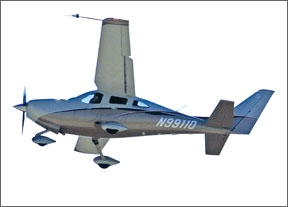
of more power. Could that be a tarted up angle-valve IO-540? Possibly. But it would need work. Knowledgeable engine experts generally agree that the IO-540s crankshaft would benefit from better counterweight damping to smooth its vibey personality and strong torsionals at the prop and accessory case. Induction and fuel injection are also less than optimal in the 540, in our view.
Were aware of two research projects outside of Lycoming that may have successfully addressed both shortcomings, although details are sparse for competitive reasons. One involves a minor mod to the Bendix/RSA fuel injection system.
Combined with improved induction, these might make the IO-540 nearly as smooth as Continentals IO-550 and would make it practical to operate lean of peak.
Lycoming has stubbornly resisted what we see as an emerging customer interest in the lean-of-peak option, despite the fact that many of its customers simply ignore
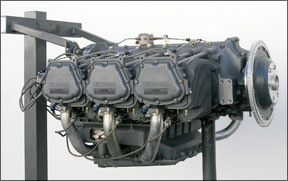
Lycomings advice and fly lean anyway. But for those who don’t, the IO-540 has poorer fuel specifics than the 550 and the difference isn’t trivial. Typically, the large-displacement Lycomings run at .41 to .45 BSFC (pounds of fuel per horsepower per hour) while best case, the IO-550 can run reliably at .38 BSFC, lean of peak. In the real world, that can add up to a 4 GPH difference in cruise and thats both a range extender and a money saver.
Although it didnt address the fuel specifics issue, Lycoming tried squeezing another variant out of the IO-540 series by boring the cylinders and creating the 315-HP IO-580. It found a few takers for this engine in the aerobatic and specialty markets but the big fish-Cessna-got away when early tests of a turbocharged version,

the TIO-580 intended for the Cessna 206, suffered a rash of cylinder cracking during testing. Cessna, no stranger to engines with poor service history, cut its losses early and stuck with the IO-540 and TIO-540. The fact that service history on the turbocharged version hasnt been sterling silver may explain why Cessna is peering into the Continental camp.
“I have to say, Lycoming is going to have trouble getting out from under this crankshaft fiasco. We get calls every day about it and people arent happy,” one major distributor told us.
Not So Easy
From the outside looking in, all this seems like a no-brainer. Lycoming may simply have to pull out the sketch pad and commit to a clean sheet engine line. But its not so easy as that, primarily because Lycomings customers have disparate needs
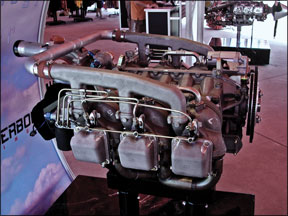
and requirements and most appear to be satisfied-if not quite thrilled-with Lycomings products.
Consider Robinson Helicopter, for instance. The fixed-wing myopics among us don’t think much about this company, but it buys 700 to 800 engines from Lycoming every year. For Lycoming, Robinson is another Cessna. In its R22, Robinson uses the Lycoming O-320 and O-360 series and in its R44 line, it installs the O-540, derated for the unique requirements of helicopters.
When Robinson needed more horsepower to improve the R44s hover-at-altitude performance, it did most of the development work itself, with some help from Lycoming, according to Robinsons Dale Taft. If Lycoming was aware of Robinsons needs, it evidently wasnt aggressive about meeting them, a trend thats not atypical in the engine business.
Kurt Robinson told us that Lycomings four-cylinders have been bullet-proof performers in the R22 and he doesnt see the need for revision of the design. “What we really want,” Robinson told us, “is a helicopter engine that can burn Jet A or diesel.” Thats because 65 percent of Robinsons sales are offshore, where avgas is becoming increasingly scarce. And thus far, Robinson is skeptical of the FADEC solution to allow use of lower octane fuel. “All of the FADECs that have been brought to us were optimized for airplanes, not helicopters,” said Taft.
Another player in Lycomings world is Vans Aircraft, whose Experimental RV series has been wildly successful, with more than 5000 flying, all behind Lycoming-type four- and six-cylinder engines. Richard VanGrunsven tells us that Vans recommends Lycoming-type engines because theyre a perfect fit with the airplanes requirements. But he concedes that his genuine Lycoming sales are in decline, with marketshare lost to Lycoming clone engines from Superior and ECI, basically because of more attractive prices.
Still, in the low horsepower end of the market, Lycoming sets the standard and dominant customers seem satisfied, even if they may be receptive to new designs. But historically, new aircraft engine designs-or “improvements” on existing engines-have just as often made things worse as they have better. Lycomings O-320-H2AD comes to mind, as does the Continental Tiara.
More recently, Rotax proposed a new small-displacement/high RPM geared V-six design that it promised would revolutionize light aircraft power. Three years later, it died a whimpering death, dope slapped by limited market demand and lack of a realistic network to service the engines.
In the airframe business, there’s an if-it-aint-broke-don’t-fix-it attitude toward engines and given the hell to pay if an engine line turns sour, this is understandable.
Lycomings Options
Were told by an engineer who worked on the project that Rotax spent about $100 million on developing its aborted V-six engine. Although that sounds high to us, even half that amount is a lot to invest in a product that, if it sells 500 a year-is a slam dunk hit. If we read Lycomings customers correctly, the four-cylinder and mid-horsepower segment of the market is stable, satisfied and perhaps capable of minimal growth.
But at the high-performance end, where the real growth in airframes may lie, Continental commands the field and one of Lycomings mainstay customers-Cessna-appears unhappy with Lycomings large displacement choices. Further, another of Lycomings big buyers, Robinson, wants a Jet A piston option.
We know Lycoming is exploring so-called heavy fuel engines because theyve said as much and we saw a prototype at Oshkosh last year. But Lycoming is at a tricky crossroads. Like any other company, it can afford to invest only so many developmental dollars in what remains a risky market with tepid demand. The business case for new engines is anything but black and white.
“A business case for a point design engine, meaning a single-engine for a limited application, is truly difficult to justify due to the high level of investment required to achieve certification,” Ian Walsh, Lycomings general manager, told us in an e-mail. “We are still in the process of assessing all the voice-of-the-customer data and constraints, as we’ll as business case on the next generation engine being avgas or heavy fuel. Bottom line: electronic control is foundational to both.” Walsh acknowledges that Cessna is exploring other options for its next generation aircraft, but that Lycoming hopes to “show them we have the right solution.”
Were somewhat bullish on Lycomings ability to do this because, frankly, we don’t think it has a choice if it wishes to find growth or perhaps even survival in a competitive market. We predict the Cessna NG will be a strong seller for Cessna and thats simply too much business for Lycoming to lose without a fight. Second, developing a new avgas engine thats fuel efficient, smooth running and reliable is expensive, but hardly a stupefying engineering challenge, if you have the right engineers, the right budget and if the corporate entity stays out of the way.
The trickiest part, in our view, is the wrong focus. If Lycoming pursues
both heavy fuel and avgas options, it runs the risk of doing we’ll with neither. Lack of a heavy fuel option, on the other hand, will stunt sales potential outside of the U.S., where avgas availability is in decline. Further, Thielert is out in front with expertise in diesels and may be hard to catch.For the U.S. market, avgas still rules, so heres our two cents on what Lycoming should do. First, it needs to abandon its objections to lean-of-peak operation and embrace the idea of full-time lean run engines. Efficiency and economy matter now, but theyll matter more in the future. Nows the time for the company-
any company-to get out in front on the lean-run option. This will make it necessary to design improved induction and to consider a simple, reliable electronic control system that makes this possible in the way that Continentals PowerLink FADEC so far has not.We think Lycoming is ideally positioned to alter course and lead the industry on this, simply because it cant afford
not to. This may yield improvements that will apply to a family of new engines, both four- and six-cylinder, but its the large displacement market that Lycoming needs to tend to. It will need to tread lightly to avoid screwing up its well-regarded small displacement line.Another thing we think both Lycoming and Continental should do is to follow the lead of Cirrus, Columbia, Mooney, Diamond and other companies in actually
using general aviation airplanes for company business. Damn the cost and the liability, put executives, engineers and marketing staff behind the yoke and let them fly an 800-mile business trip to see what the rest of us see. Hearing the voice of the customer is one thing, but nothing quite focuses the mind like being a customer.

